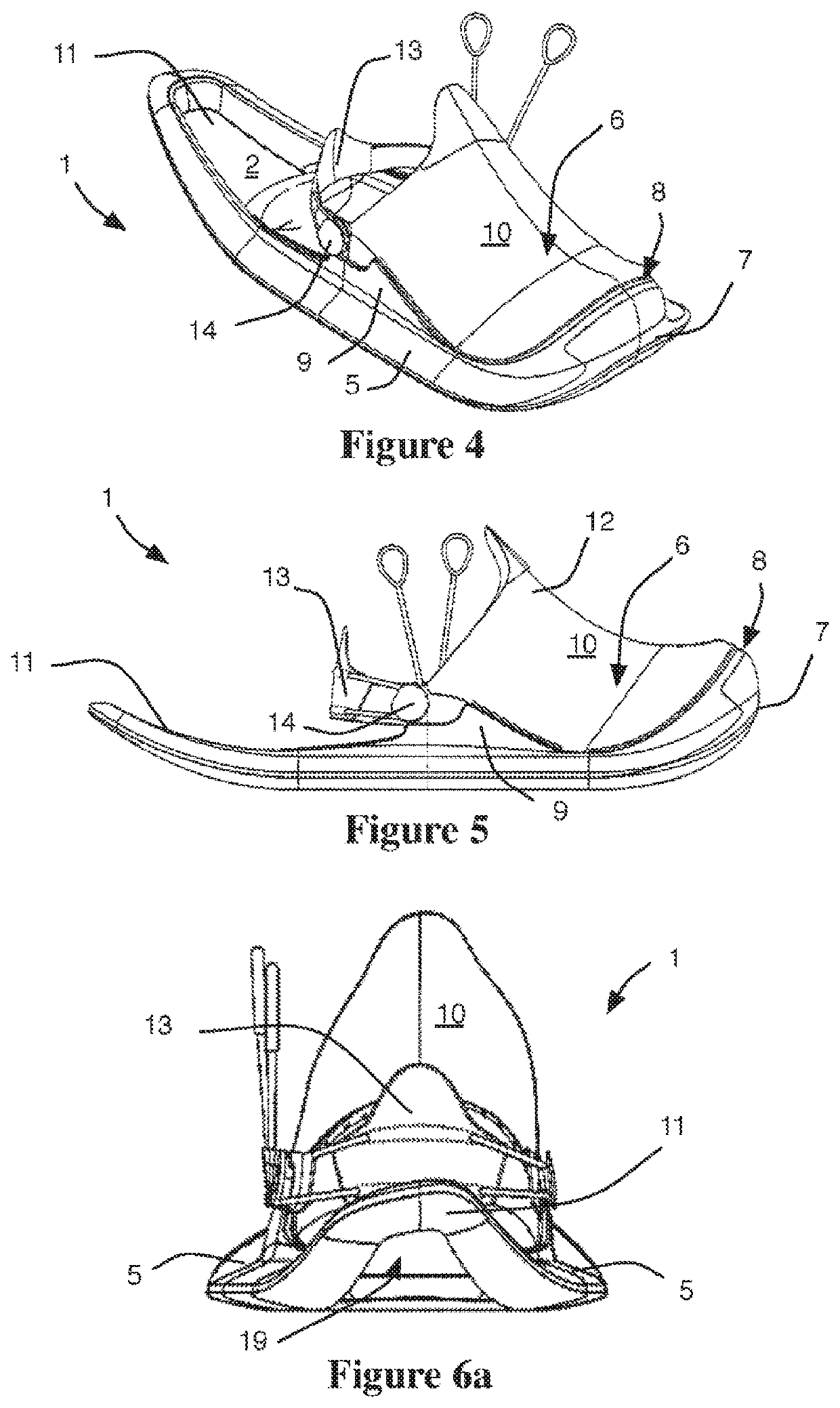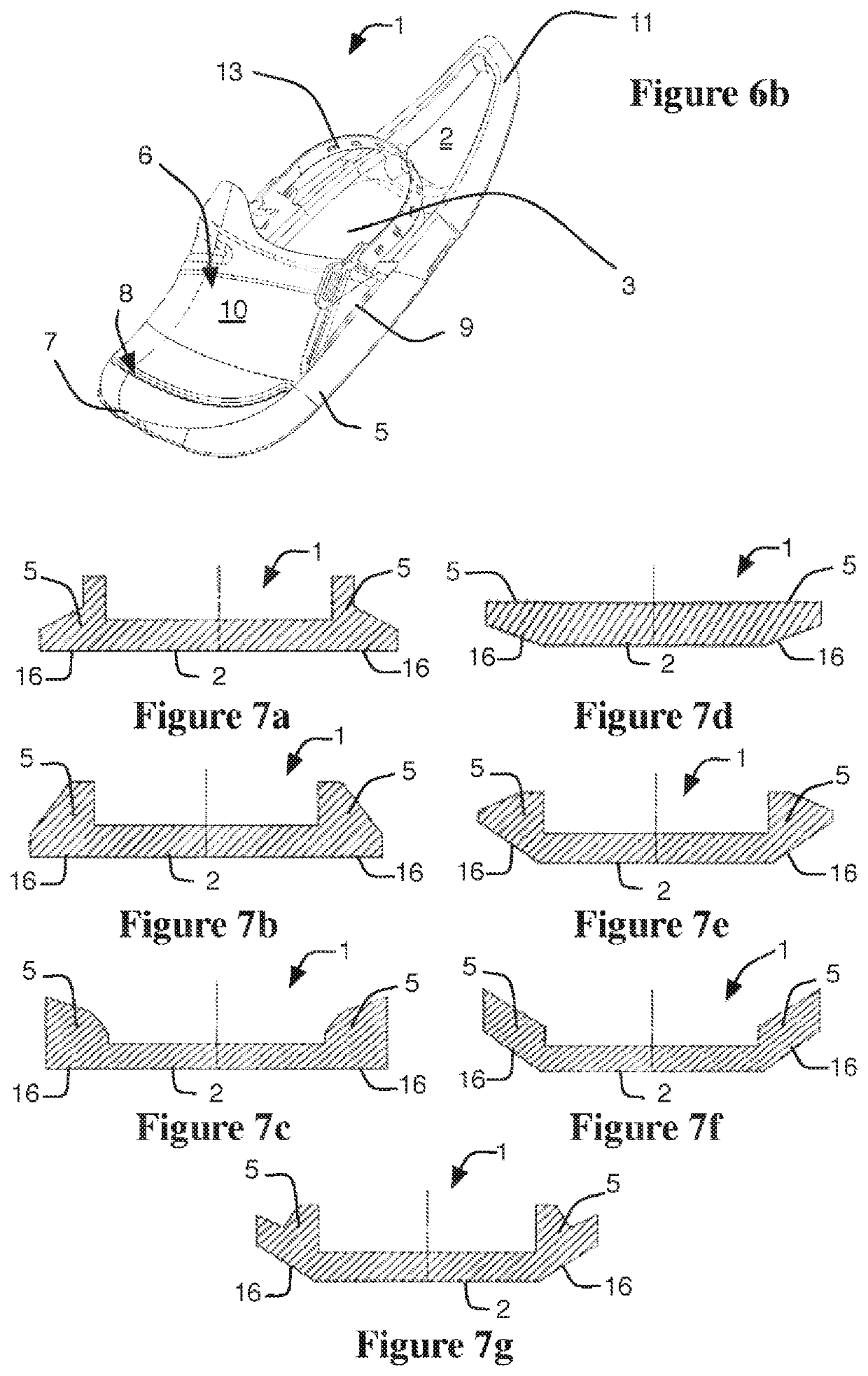Snowshoe
a technology of snowshoes and sleds, applied in the field of snowshoes, can solve the problems of difficult handling, difficulty in walking the snowshoe user, and inability to achieve the effect of snowshoes,
- Summary
- Abstract
- Description
- Claims
- Application Information
AI Technical Summary
Benefits of technology
Problems solved by technology
Method used
Image
Examples
Embodiment Construction
Body of the Snowshoe and Base Structure
[0061]FIGS. 1 to 6 show from various points of view one example of a snowshoe according to the invention. As clearly visible in FIGS. 1 and 3, the snowshoe 1 includes a base structure 2 including a shoe zone 3 and a lift zone 4 that surrounds the shoe zone 3, except at the front of the shoe zone, where the snowshoe terminates to form a front portion 7. This front portion includes a toecap 8 substantially corresponding to the front of the shoe zone 3. This results in a snowshoe with no front shovel, considerably benefiting ergonomics and walking comfort. Moreover, the user can use their snowshoes to walk in a similar manner to normal walking in shoes, rolling the foot, that is to say by first setting down the heel, then the sole of the foot, and finally the front of the foot. The rolling movement then continues with the raising of the heel and finishes with propulsion at the level of the toes. As shown, the toecap 8 is advantageously of curved s...
PUM
 Login to View More
Login to View More Abstract
Description
Claims
Application Information
 Login to View More
Login to View More - R&D
- Intellectual Property
- Life Sciences
- Materials
- Tech Scout
- Unparalleled Data Quality
- Higher Quality Content
- 60% Fewer Hallucinations
Browse by: Latest US Patents, China's latest patents, Technical Efficacy Thesaurus, Application Domain, Technology Topic, Popular Technical Reports.
© 2025 PatSnap. All rights reserved.Legal|Privacy policy|Modern Slavery Act Transparency Statement|Sitemap|About US| Contact US: help@patsnap.com



